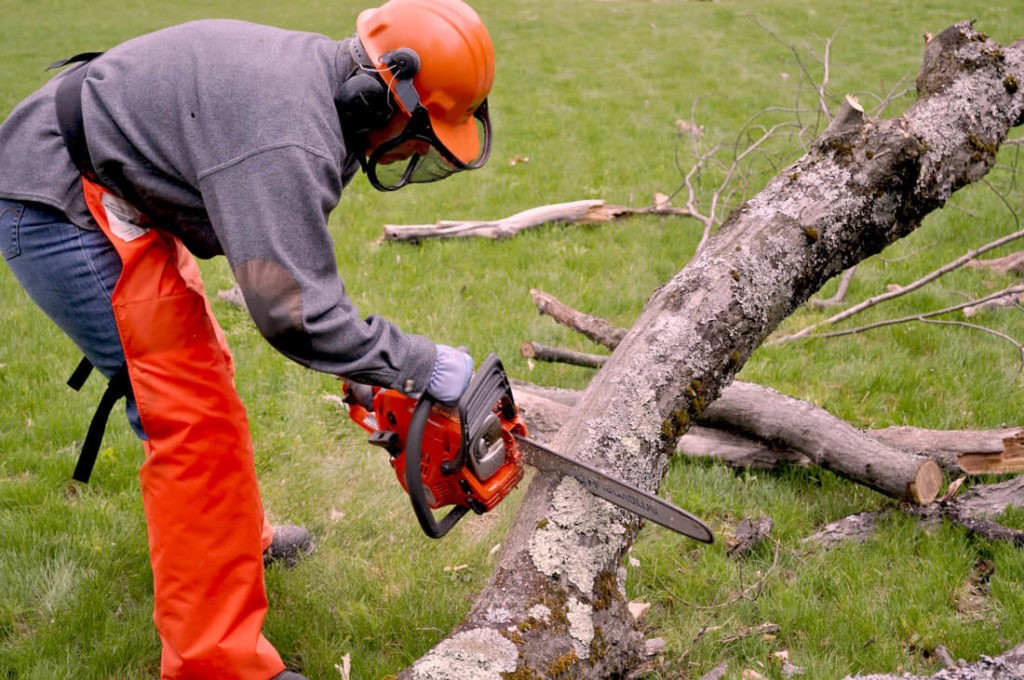Have you ever looked at a tree in your backyard and wondered how it would be possible to remove it without causing any damage? Tree removal is a delicate art form that requires expertise and care. Whether you need to make way for new construction or simply want to clear out space, understanding the intricacies of tree extraction is essential.
Tree removing, or tree removal, is not a task to be taken lightly. It goes beyond simply chopping down a tree. The process involves assessing the tree’s health and structural integrity, understanding the surrounding environment, and executing a plan that ensures safe and efficient removal. With the right techniques and tools, tree removal can be done without leaving a trace and preserving the beauty of your outdoor space.
In this guide, we will delve into the art of tree extraction, exploring the step-by-step process of removing trees and highlighting key considerations along the way. From assessing the tree’s health to choosing the appropriate equipment, we will provide you with expert insights and tips to ensure that your tree removal project is a success. So, let’s delve into the world of tree removal and unlock the secrets to mastering this art form.
Assessing Tree Removal Needs
When it comes to tree removal, it is crucial to accurately assess the needs of the situation. Every tree removal project is unique, requiring careful evaluation before any action is taken. By considering various factors, such as the tree’s condition, location, and potential risks, a proper assessment can guide the entire tree removal process.
First and foremost, evaluating the condition of the tree is essential. Determine if the tree is healthy or diseased, as well as any signs of decay or structural damage. A thorough examination will help determine the level of risk associated with the tree and the need for removal.
Next, consider the location of the tree. Assess whether it poses any hazards or obstacles, such as being too close to buildings, power lines, or roads. Trees in precarious positions may require removal to ensure the safety of surrounding structures and people.
Utility Line Clearance Companies
Additionally, it is important to assess the potential risks associated with the tree. Are there signs of leaning or instability? Does the tree have weak branches that could fall and cause damage? Identifying these risks will help determine the urgency and extent of the tree removal.
By carefully evaluating the condition, location, and potential risks, professionals can determine the necessary steps for expert tree removal. This assessment sets the foundation for a safe and efficient tree removal process, ensuring the protection of both property and people involved.
Steps for Safe Tree Extraction
In order to safely remove a tree from a property, it is important to follow a systematic approach that minimizes both risks and potential damage. By adhering to the following steps, expert tree removal can be accomplished efficiently and safely.
Assessing the Tree: The first step in the tree extraction process is to closely examine the tree and its surroundings. This evaluation helps determine the size, condition, and any potential risks associated with the tree. Factors such as proximity to structures, power lines, or nearby trees are assessed to develop a strategic plan for the removal.
Planning and Preparation: Once the assessment is complete, the next step involves meticulous planning and preparation. This includes determining the most suitable method for extraction, ensuring the availability of necessary equipment, securing required permits if applicable, and notifying any relevant parties about the upcoming removal.
Execution: The final step is the actual removal of the tree. This is carried out through various techniques depending on the tree’s characteristics and specific requirements. Professional arborists employ specialized equipment and adhere to industry best practices to safely fell, limb, and remove the tree from the property. Following the completion of the extraction, the area is thoroughly cleaned and any remaining debris is properly disposed of.

By following these steps, expert tree removal is achieved with utmost care and precaution, ensuring the safety of both the removal team and the surrounding environment. Tree extraction is an intricate process that requires the expertise of professionals to minimize any potential risks and safely remove the tree from the property.
Post-Extraction Tree Care
After successfully removing a tree, it is essential to provide proper care to ensure the health and well-being of the surrounding environment. Here are some important steps to follow for post-extraction tree care:
Remove Debris: Once the tree has been extracted, it is crucial to clear away any debris left behind. This includes branches, leaves, and wood chips that may have scattered during the extraction process. Removing this debris not only helps maintain a clean and tidy appearance but also reduces the risk of tripping hazards.
Inspect Surrounding Trees: Check the neighboring trees for any signs of damage that may have occurred during the extraction. Look for broken branches, cracks, or any other visible signs of stress. If any issues are detected, consult with a professional arborist for further evaluation and potential treatment.
Consider Replanting: Depending on the circumstances, it may be beneficial to consider replanting another tree in the same area. Replanting not only enhances the aesthetics of the landscape but also contributes to the ecological balance. However, it is crucial to choose a tree species suitable for the specific location and to follow proper planting guidelines to ensure its successful growth.
Remember, proper post-extraction tree care plays a critical role in maintaining the overall well-being of your landscape. By following these steps, you can help preserve the ecological balance while ensuring the safety and vitality of your surroundings.
